-
 Bitcoin
Bitcoin $78,376.0795
-4.77% -
 Ethereum
Ethereum $1,548.8063
-11.55% -
 Tether USDt
Tether USDt $0.9994
-0.02% -
 XRP
XRP $1.8818
-9.04% -
 BNB
BNB $551.7480
-4.69% -
 USDC
USDC $1.0000
0.01% -
 Solana
Solana $106.1095
-7.66% -
 Dogecoin
Dogecoin $0.1468
-8.95% -
 TRON
TRON $0.2275
-4.95% -
 Cardano
Cardano $0.5707
-8.85% -
 UNUS SED LEO
UNUS SED LEO $8.9335
-1.49% -
 Toncoin
Toncoin $3.0253
-8.20% -
 Chainlink
Chainlink $11.2802
-7.86% -
 Stellar
Stellar $0.2302
-8.79% -
 Avalanche
Avalanche $16.4569
-4.24% -
 Shiba Inu
Shiba Inu $0.0...01128
-5.14% -
 Sui
Sui $2.0097
-2.68% -
 Hedera
Hedera $0.1463
-4.76% -
 MANTRA
MANTRA $6.2909
1.82% -
 Polkadot
Polkadot $3.5783
-7.89% -
 Bitcoin Cash
Bitcoin Cash $271.3725
-8.06% -
 Dai
Dai $1.0000
0.00% -
 Litecoin
Litecoin $70.0284
-11.01% -
 Ethena USDe
Ethena USDe $0.9986
-0.03% -
 Bitget Token
Bitget Token $4.0832
-5.49% -
 Pi
Pi $0.5780
-5.55% -
 Monero
Monero $201.8656
-4.22% -
 Hyperliquid
Hyperliquid $10.9226
-3.72% -
 Uniswap
Uniswap $5.1124
-8.67% -
 OKB
OKB $51.1549
-4.68%
What is off-chain governance? What are its advantages and disadvantages?
Off-chain governance, managing DAOs outside the blockchain, offers scalability and reduced fees but risks reduced transparency and potential centralization; careful design is crucial.
Mar 12, 2025 at 05:51 am

Key Points:
- Off-chain governance refers to the process of making decisions about a blockchain project or decentralized autonomous organization (DAO) outside of the main blockchain's ledger.
- Advantages include increased scalability, reduced transaction fees, and enhanced privacy.
- Disadvantages include potential security risks, reduced transparency, and the possibility of centralization.
What is Off-Chain Governance?
Off-chain governance represents a method of managing and making decisions within a cryptocurrency project or DAO that operates outside the constraints of the primary blockchain. Instead of recording every vote and proposal directly onto the blockchain, these actions occur on a separate platform or system. This allows for greater efficiency and flexibility, particularly beneficial for projects with large communities and frequent governance activities. Think of it as holding a town hall meeting before submitting a formal proposal to the council (the blockchain).
Advantages of Off-Chain Governance:
- Scalability: Processing governance proposals and votes on-chain can be incredibly expensive and slow, especially for projects with numerous participants. Off-chain solutions bypass these limitations, allowing for faster and more efficient decision-making processes.
- Reduced Transaction Fees: On-chain governance involves writing every transaction to the blockchain, resulting in substantial transaction fees. Off-chain methods drastically reduce these costs, making governance more accessible to all community members.
- Enhanced Privacy: Voting on-chain often reveals the identity and voting preferences of participants. Off-chain mechanisms can implement more robust privacy measures, shielding voters from undue influence or harassment.
- Increased Flexibility: Off-chain systems can support a wider range of governance models and voting mechanisms. This allows projects to adapt their governance structures to better suit their specific needs and community preferences. Complex voting systems, like quadratic voting, are often easier to implement off-chain.
Disadvantages of Off-Chain Governance:
- Security Risks: Since the governance process isn't directly on the blockchain, it becomes vulnerable to various security threats, including hacking, manipulation, and data breaches. Robust security measures are critical to mitigate these risks.
- Reduced Transparency: The lack of on-chain transparency raises concerns about accountability and potential for manipulation. While some off-chain systems offer varying degrees of transparency, it’s inherently less transparent than on-chain governance.
- Centralization Concerns: Off-chain governance relies on a central authority or platform to manage the process. This can lead to concerns about centralization, undermining the decentralized ethos of many blockchain projects. Careful consideration of the platform’s architecture is crucial to avoid this pitfall.
- Complexity: Implementing and managing an effective off-chain governance system can be complex, requiring specialized technical expertise and resources. This can present a significant barrier for smaller projects or those lacking the necessary skills.
- Potential for Collusion: The potential for collusion among participants outside of the transparent on-chain environment presents a serious risk. Mechanisms to detect and prevent such actions must be integrated into the off-chain system.
How Off-Chain Governance Works:
The implementation of off-chain governance typically involves these steps:
- Proposal Submission: Proposals are submitted through a designated off-chain platform or channel.
- Discussion and Debate: Community members engage in discussions and debates regarding the proposal.
- Voting: Members cast their votes using the designated off-chain system.
- Result Aggregation: The votes are aggregated and the outcome is determined.
- On-Chain Execution (Often): The result of the off-chain voting process is then typically submitted to the blockchain as a transaction to implement the decision. This final step is crucial to ensure the decision's legitimacy and impact on the blockchain project.
Examples of Off-Chain Governance Mechanisms:
Several different mechanisms can facilitate off-chain governance, each with its own strengths and weaknesses:
- Dedicated Governance Platforms: These platforms provide dedicated tools and interfaces for proposal submission, discussion, voting, and result aggregation.
- Forums and Communication Channels: Simpler projects might use forums, Discord servers, or other communication channels for governance discussions and voting. These methods often lack the security and auditability of dedicated platforms.
Common Questions and Answers:
Q: Is off-chain governance inherently less secure than on-chain governance?
A: Not necessarily. While on-chain governance benefits from the blockchain's immutability, well-designed off-chain systems can incorporate strong security measures, such as multi-signature wallets and encryption, to mitigate risks. The security depends heavily on the specific implementation.
Q: How can the transparency of off-chain governance be improved?
A: Transparency can be improved by publicly sharing voting records (while protecting voter anonymity), utilizing cryptographic techniques to verify the integrity of the voting process, and conducting regular audits of the governance platform.
Q: How can the risk of centralization be mitigated in off-chain governance?
A: Decentralized governance platforms, open-source code, and community oversight can help mitigate centralization risks. Employing multiple independent nodes to process and aggregate votes also contributes to decentralization.
Q: What are the trade-offs between on-chain and off-chain governance?
A: On-chain governance offers greater transparency and security but suffers from scalability and cost issues. Off-chain governance offers scalability and cost efficiency but can compromise transparency and security if not carefully designed and implemented. The best approach depends on the specific project's needs and priorities.
Disclaimer:info@kdj.com
The information provided is not trading advice. kdj.com does not assume any responsibility for any investments made based on the information provided in this article. Cryptocurrencies are highly volatile and it is highly recommended that you invest with caution after thorough research!
If you believe that the content used on this website infringes your copyright, please contact us immediately (info@kdj.com) and we will delete it promptly.
- As clouds gathered over the crypto landscape, a flash tore through the sky: Ethereum, an essential pillar, lost 14% of its value in 24 hours
- 2025-04-08 01:15:11
- The scandal related to ZKasino, a blockchain-based gambling platform, continues to widen
- 2025-04-08 01:15:11
- As We Approach May 2025, Dogecoin (DOGE) Investors Are Facing Uncertainty
- 2025-04-08 01:10:12
- Cryptocurrency markets plunged sharply early Monday, wiping billions from the total market capitalization
- 2025-04-08 01:10:12
- Dogecoin (DOGE) Price Surge Incoming? Analysts Point to Historical Patterns
- 2025-04-08 01:05:12
- Mutuum Finance (MUTM) Token Identified by Algorithms to Deliver Exponential Upside Before 2025
- 2025-04-08 01:05:12
Related knowledge
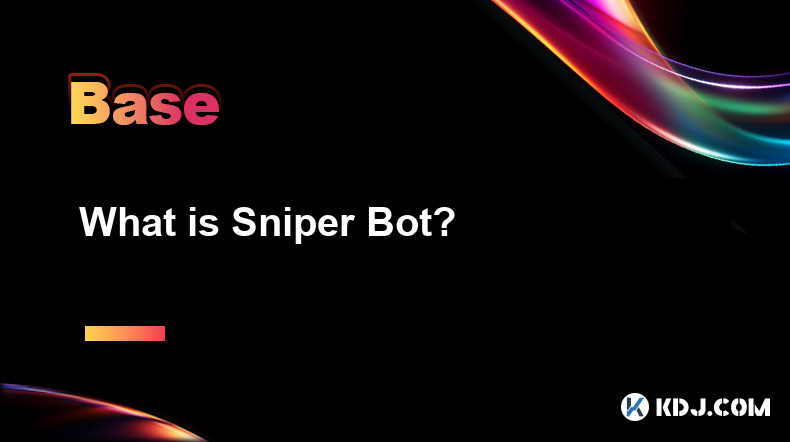
What is Sniper Bot?
Apr 07,2025 at 10:43pm
A Sniper Bot is a type of automated trading software used within the cryptocurrency market to execute trades at optimal times, often milliseconds before other traders. These bots are designed to take advantage of new token listings, price fluctuations, and other market opportunities to buy or sell assets quickly and efficiently. The primary goal of a Sn...
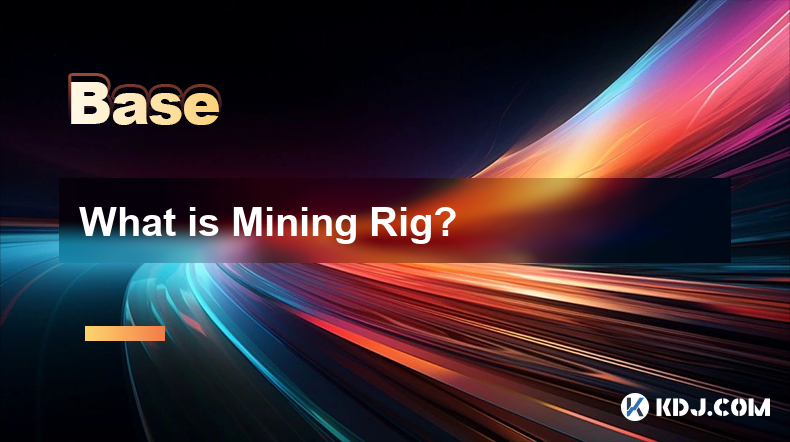
What is Mining Rig?
Apr 07,2025 at 11:08pm
A mining rig is a specialized computer system designed specifically for the purpose of mining cryptocurrencies. Mining, in the context of cryptocurrencies, refers to the process of solving complex mathematical problems to validate transactions and add them to the blockchain. This process requires significant computational power, and a mining rig is buil...
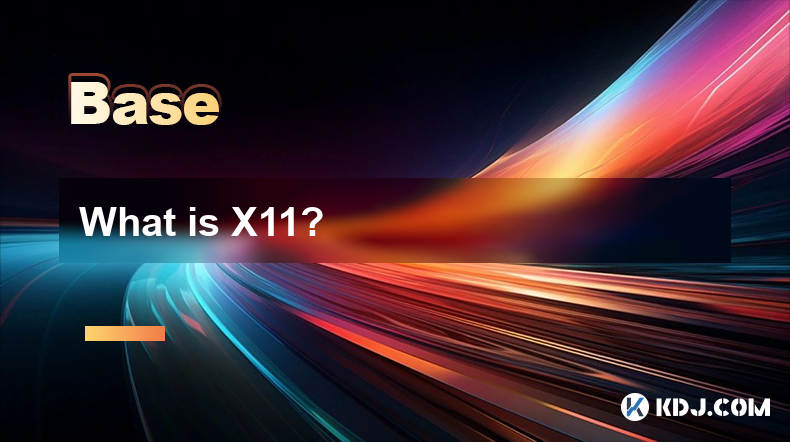
What is X11?
Apr 07,2025 at 09:22pm
What is X11? X11 is a cryptographic hash function used in various cryptocurrencies, most notably in the Dash cryptocurrency. It is designed to provide a high level of security and efficiency, making it a popular choice for blockchain networks. The X11 algorithm is unique because it uses a chain of 11 different hashing algorithms, which enhances its secu...
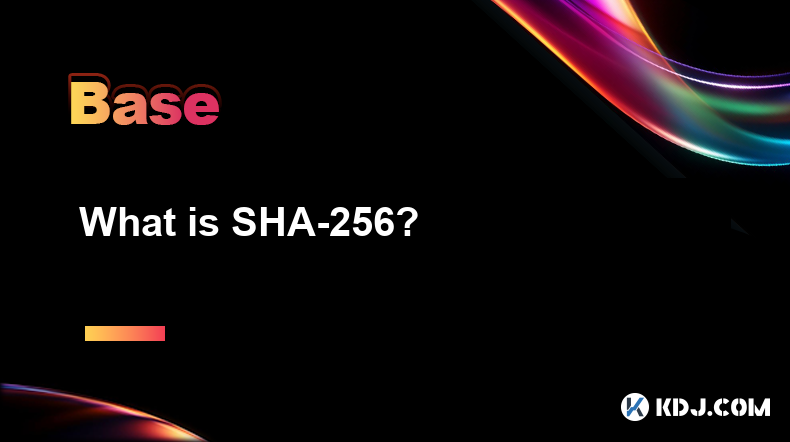
What is SHA-256?
Apr 07,2025 at 11:15pm
What is SHA-256?SHA-256, or Secure Hash Algorithm 256-bit, is a cryptographic hash function that is part of the SHA-2 family of hash functions. It is widely used in the cryptocurrency world, particularly in Bitcoin and other blockchain technologies, for securing data and ensuring the integrity of transactions. This article will delve into the specifics ...

What is an elliptic curve?
Apr 08,2025 at 01:21am
An elliptic curve is a fundamental concept in mathematics that has found significant applications in the field of cryptography, particularly within the cryptocurrency sector. In the context of cryptocurrencies, elliptic curves are used to create secure cryptographic systems that underpin the security of transactions and the generation of digital signatu...
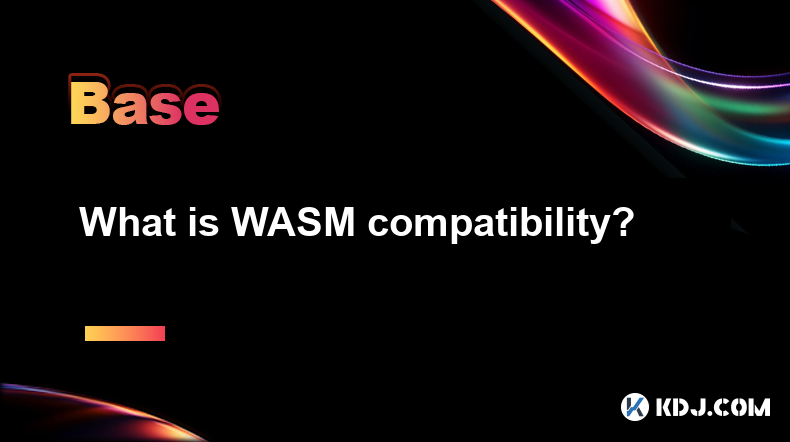
What is WASM compatibility?
Apr 07,2025 at 09:08pm
What is WASM Compatibility? WASM, or WebAssembly, is a binary instruction format for a stack-based virtual machine. It is designed to be a portable compilation target for programming languages, enabling deployment on the web for client and server applications. In the context of cryptocurrencies and blockchain technology, WASM compatibility refers to the...

What is Sniper Bot?
Apr 07,2025 at 10:43pm
A Sniper Bot is a type of automated trading software used within the cryptocurrency market to execute trades at optimal times, often milliseconds before other traders. These bots are designed to take advantage of new token listings, price fluctuations, and other market opportunities to buy or sell assets quickly and efficiently. The primary goal of a Sn...

What is Mining Rig?
Apr 07,2025 at 11:08pm
A mining rig is a specialized computer system designed specifically for the purpose of mining cryptocurrencies. Mining, in the context of cryptocurrencies, refers to the process of solving complex mathematical problems to validate transactions and add them to the blockchain. This process requires significant computational power, and a mining rig is buil...

What is X11?
Apr 07,2025 at 09:22pm
What is X11? X11 is a cryptographic hash function used in various cryptocurrencies, most notably in the Dash cryptocurrency. It is designed to provide a high level of security and efficiency, making it a popular choice for blockchain networks. The X11 algorithm is unique because it uses a chain of 11 different hashing algorithms, which enhances its secu...

What is SHA-256?
Apr 07,2025 at 11:15pm
What is SHA-256?SHA-256, or Secure Hash Algorithm 256-bit, is a cryptographic hash function that is part of the SHA-2 family of hash functions. It is widely used in the cryptocurrency world, particularly in Bitcoin and other blockchain technologies, for securing data and ensuring the integrity of transactions. This article will delve into the specifics ...

What is an elliptic curve?
Apr 08,2025 at 01:21am
An elliptic curve is a fundamental concept in mathematics that has found significant applications in the field of cryptography, particularly within the cryptocurrency sector. In the context of cryptocurrencies, elliptic curves are used to create secure cryptographic systems that underpin the security of transactions and the generation of digital signatu...

What is WASM compatibility?
Apr 07,2025 at 09:08pm
What is WASM Compatibility? WASM, or WebAssembly, is a binary instruction format for a stack-based virtual machine. It is designed to be a portable compilation target for programming languages, enabling deployment on the web for client and server applications. In the context of cryptocurrencies and blockchain technology, WASM compatibility refers to the...
See all articles





















































































